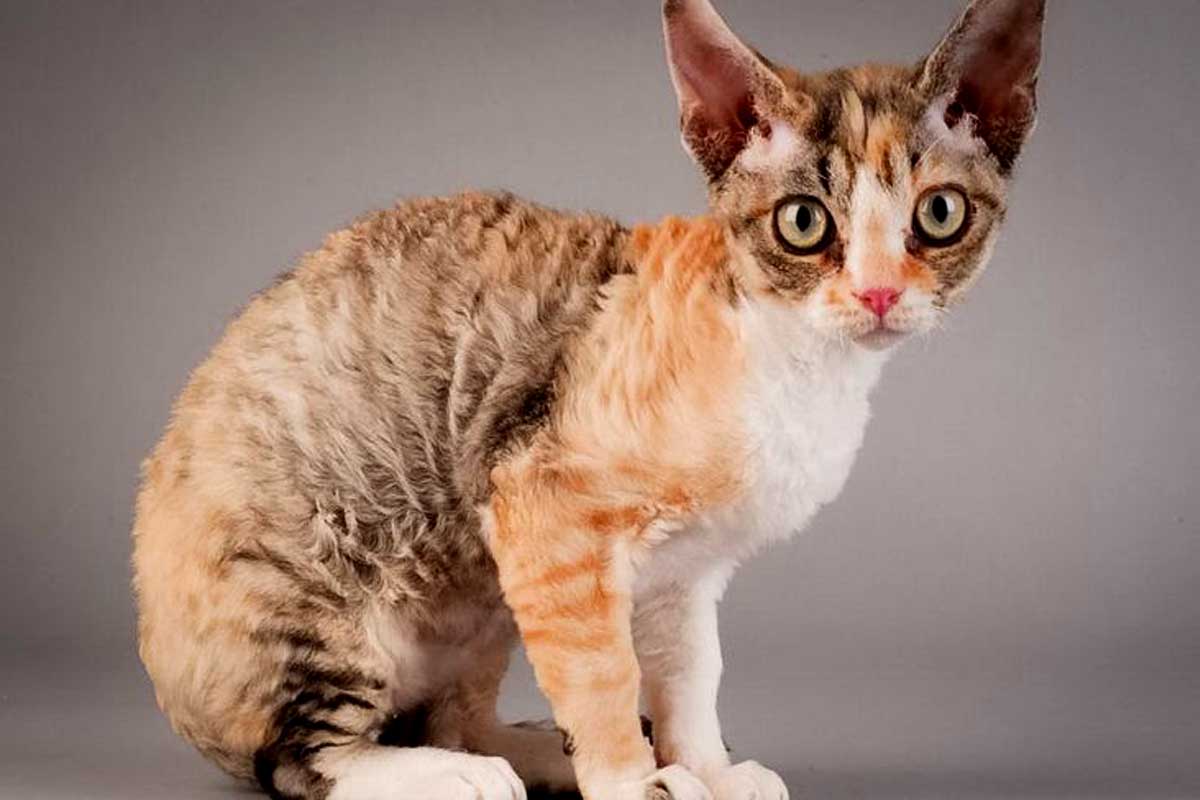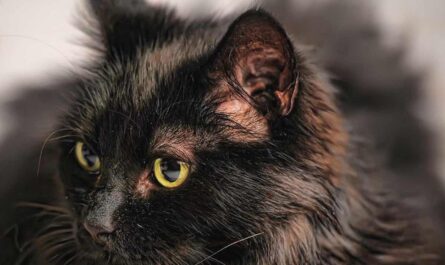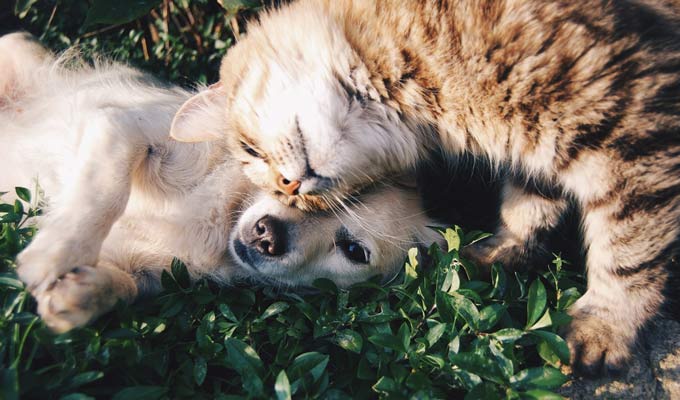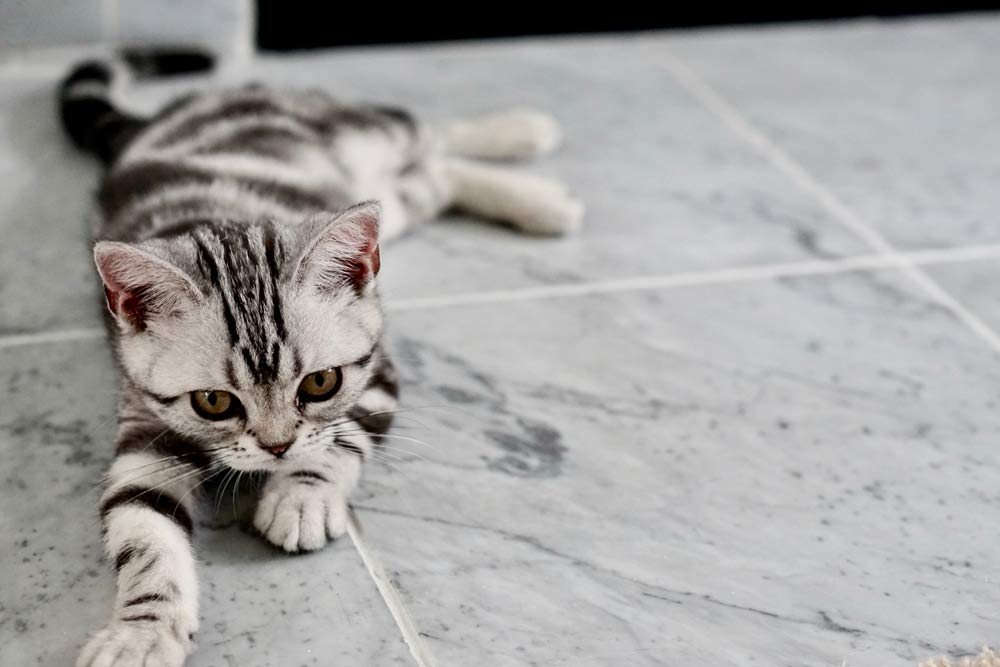Viral infection in cats, have you ever woken up to find your usually playful feline friend curled up listlessly, their bright eyes dull and their appetite gone? That sudden change in your cat’s demeanor can be a cause for concern, and sometimes, the culprit behind it can be a sneaky invader too small to see – a virus.
This article aims to be your guide through the world of viral infections in cats. We’ll explore the common feline viruses that can cause these changes, the signs to watch out for, and how to keep your furry companion healthy. We’ll also delve into the various diagnostic tools veterinarians use and the treatment options available. Finally, we’ll equip you with the knowledge to prevent these tiny troublemakers from causing trouble in the first place.
From the widely known feline herpesvirus to the more specific feline calicivirus, we’ll explore the different viruses and the range of symptoms they can cause. Remember, early detection and proper management are key to ensuring your cat recovers quickly and gets back to their playful, purring self.
A World of Viruses: Understanding the Culprits Behind Feline Viral Infections
Ever wondered why your cat might be feeling a bit under the weather, with a runny nose or a lack of their usual playful energy? The culprit could be a tiny invader – a virus! Viruses are microscopic particles much smaller than bacteria, and unlike their single-celled counterparts, they can’t survive on their own. These stealthy microbes act like molecular pirates, hijacking healthy cells in your cat’s body to make copies of themselves. This process can disrupt the normal functioning of the cells, leading to various health problems.
A Rogues’ Gallery of Feline Viruses
Just like humans can catch colds or the flu, cats are susceptible to a variety of viral infections. Here are some of the most common feline viral foes:
- Feline Herpesvirus-1 (FHV-1): This sneaky virus is a common cause of upper respiratory infections in cats, causing symptoms like sneezing, congestion, and watery eyes. Think of it like a feline version of a head cold.
- Feline Calicivirus (FCV): Another upper respiratory villain, FCV can cause similar symptoms to FHV-1, but can also lead to mouth ulcers and even pneumonia in severe cases.
- Feline Parvovirus (FPV): This highly contagious virus attacks the intestines, causing vomiting, diarrhea, and lethargy. It’s particularly dangerous for kittens and unvaccinated cats.
- Feline Leukemia Virus (FeLV): FeLV weakens a cat’s immune system, making them more susceptible to other infections and illnesses. While there’s no cure, with proper care and management, FeLV-positive cats can still live long and happy lives.
Beyond the Usual Suspects
This isn’t an exhaustive list of feline viral foes. Other, less common viruses can also affect cats. If your furry friend is experiencing any concerning symptoms, it’s important to consult your veterinarian for a proper diagnosis and treatment plan.
The Age Factor: Why Kittens and Seniors Need Extra Care
Kittens and senior cats are often more vulnerable to viral infections. Kittens’ immune systems are still developing, and senior cats’ immune systems may weaken with age. This makes them more susceptible to these microscopic invaders. Regular veterinary checkups, proper nutrition, and a stress-free environment are all crucial for keeping your cat’s defenses strong throughout their life.
By understanding the world of viruses and how they can affect your cat, you can be a more informed and proactive pet parent. The next section will delve into the signs and symptoms of feline viral infections, helping you identify potential problems early on.
A Symphony of Symptoms: Recognizing the Signs of a Feline Viral Infection
Cats are masters of disguise, often hiding discomfort until they’re not feeling well. However, their bodies have a way of communicating when something’s amiss, and viral infections can trigger a whole orchestra of symptoms. Here, we’ll explore the various ways a feline viral infection might play out, helping you recognize the signs and get your cat the care they need.
The Spectrum of Symptoms: A Cat’s Chorus of Clues
Just like with humans, viral infections in cats can manifest in a wide range of ways. The specific symphony of symptoms will depend on the particular virus involved and the severity of the infection. Some viruses might cause just a mild sniffle, while others can lead to more serious illness. Here’s a breakdown of some common signs to watch out for:
Respiratory Woes: The Classic Cat Cold
Feline Herpesvirus-1 (FHV-1) and Feline Calicivirus (FCV) are two common culprits behind upper respiratory infections in cats. These infections can feel very similar to the common cold us humans get. Listen for:
- Sneezing: Those adorable little sneezes might be cute at first, but frequent sneezing can be a sign of irritation in the nasal passages.
- Congestion: A stuffy nose can make it difficult for your cat to breathe comfortably. You might notice them sniffling or having trouble catching their breath.
- Coughing: A hacking cough can be another indicator of irritation in the respiratory system.
- Conjunctivitis: Inflamed, watery eyes, often accompanied by squinting or redness, can be a sign of infection.
These symptoms might be accompanied by a slight decrease in appetite or energy levels, but overall, your cat should still seem relatively happy and playful.
Beyond the Sniffles: The Whole-Body Woes
Some viral infections can cause more widespread symptoms that affect the entire body. These might include:
- Fever: A warm or hot nose and ears can indicate a fever. If you suspect your cat has a fever, take their temperature rectally with a digital thermometer specifically designed for pets.
- Lethargy: A normally active cat who suddenly becomes sluggish or disinterested in playing could be a sign they’re not feeling well.
- Loss of Appetite: If your cat turns up their nose at their favorite food, it could be a sign of nausea or discomfort.
- Diarrhea: Loose, watery stools are never a good sign and can indicate an upset stomach caused by a viral infection.
While these symptoms can be concerning, early detection and treatment are key. If you notice any of these signs in your feline friend, it’s best to schedule a visit with your veterinarian for a proper diagnosis.
Gastrointestinal Distress: A Feline Frenzy
Feline Parvovirus is a particularly nasty virus that specifically targets the gastrointestinal system. This virus can cause severe vomiting, diarrhea, and dehydration, posing a significant health risk, especially for kittens and unvaccinated cats. Here’s what to watch out for:
- Projectile Vomiting: If your cat is forcefully throwing up clear liquid, bile, or food, it’s a cause for immediate concern.
- Severe Diarrhea: Frequent, watery stools can quickly lead to dehydration in cats.
- Lethargy and Weakness: The combination of vomiting and diarrhea can leave your cat feeling drained and lethargic.
If you suspect your cat might have feline parvovirus, seek immediate veterinary attention. This is a serious condition that requires prompt treatment to prevent severe complications.
Unveiling the Culprit: Diagnosis of Viral Infections in Cats
Ever notice your feline friend looking a little under the weather? While cats are known for being independent creatures, a change in their usual behavior or energy levels might indicate they’re not feeling their best. If you suspect your cat has a viral infection, a trip to the veterinarian is the most important step towards getting them the care they need.
Why a Vet Visit Matters
Many viral infections in cats share similar symptoms, like sneezing, coughing, or lethargy. These symptoms can also mimic other feline illnesses. A veterinarian is like a detective, using their expertise to gather clues and determine the root cause of your cat’s discomfort. Through a thorough examination, they can identify the specific virus at play and recommend the most effective treatment plan.
Veterinarian’s Toolkit: Unmasking the Mystery
Just like a detective uses different tools to solve a case, veterinarians have a whole arsenal at their disposal to diagnose viral infections. Here’s a peek inside their toolbox:
- The Physical Exam: The veterinarian will give your cat a complete physical examination, checking for fever, dehydration, and any abnormalities in their eyes, ears, or respiratory system.
- Blood Work: Blood tests can reveal valuable information about your cat’s overall health and immune system function. These tests might identify signs of inflammation or infection that can point toward a specific virus.
- Diagnostic Tests: In some cases, more specific viral tests might be necessary. One such test is a PCR (polymerase chain reaction) test, which can directly detect the presence of certain viral genetic material.
Putting the Pieces Together: Differential Diagnosis
Diagnosing a viral infection isn’t always a straightforward process. The veterinarian will consider all the information they’ve gathered to create a differential diagnosis. This means they’ll list all the possible causes that could explain your cat’s symptoms, including different viral infections and other potential illnesses. By carefully evaluating the results of the physical exam, blood work, and any specific viral tests, they can narrow down the possibilities and reach a definitive diagnosis.
A Cat’s History Speaks Volumes
Your cat’s medical history, vaccination status, and lifestyle can be valuable pieces of the puzzle for the veterinarian. For example, knowing if your cat is up-to-date on their vaccinations can help rule out certain viruses. Similarly, if your cat spends time outdoors or interacts with other felines, they might be more at risk for specific viral infections.
By working together and providing the veterinarian with as much information as possible, you can help them solve the mystery and get your cat on the road to recovery.
Battling the Bug: Treatment Options for Viral Infections in Cats
Does your feline friend seem a little under the weather? Have you noticed sneezing, runny eyes, or a lack of their usual playful energy? If so, they might be battling a viral infection. While there isn’t a magic cure for most viral illnesses in cats, there are plenty of ways to help them feel better and support their natural healing process.
No Magic Bullet, But Hope Remains: Supportive Care Takes Center Stage
Unlike bacterial infections that can be treated with antibiotics, viral infections require a different approach. There isn’t currently a one-size-fits-all cure for most feline viruses. However, this doesn’t mean there’s no hope! Veterinarians have a toolbox filled with supportive care strategies to help your cat fight off the virus and recover as quickly as possible.
Here are some key ways to support your cat’s journey back to health:
- Hydration Heroes: Cats can become dehydrated when they’re sick, so providing plenty of fresh, clean water is crucial. You can encourage them to drink by using a pet fountain or offering warmed broth.
- Nutritional Powerhouse: Just like us, cats need good nutrition to fight off illness. Talk to your veterinarian about a diet that’s easy to digest and provides all the essential vitamins and minerals your cat needs to recover. Sometimes, a temporary switch to a bland diet like boiled chicken and white rice can be helpful for cats with upset stomachs.
- Rest and Relaxation: Imagine how much better you feel when you can rest in bed all day when you’re sick! The same goes for cats. Provide your feline friend with a quiet, comfortable space to rest and recover.
By creating a supportive environment and making sure your cat stays hydrated and nourished, you’re giving their body the best chance to fight off the virus and get back to their playful antics.
Antibiotics for Secondary Infections: Lending a Helping Paw
Sometimes, viral infections can leave a cat’s immune system weakened, making them more susceptible to secondary bacterial infections. If your veterinarian diagnoses a secondary bacterial infection, they might prescribe antibiotics to target the specific bacteria involved. These antibiotics won’t directly attack the virus, but they can help your cat feel better and prevent the secondary infection from worsening.
Antiviral Medications: A Look at the Future
There are some antiviral medications available for specific viral infections in cats, like Feline Herpesvirus (FHV-1). However, these medications are typically used in conjunction with supportive care and may not be suitable for all cases. The good news is that research into more effective antiviral treatments for cats is ongoing. Who knows, maybe in the future, there will be a wider range of antiviral options available to help felines fight off these pesky viruses!
Remember, early diagnosis and veterinary care are crucial for any cat showing signs of a viral infection. Your veterinarian can recommend the most appropriate treatment plan based on the specific virus and your cat’s individual needs. With supportive care, love, and a little patience, your feline friend can bounce back from a viral illness and get back to enjoying life to the fullest.
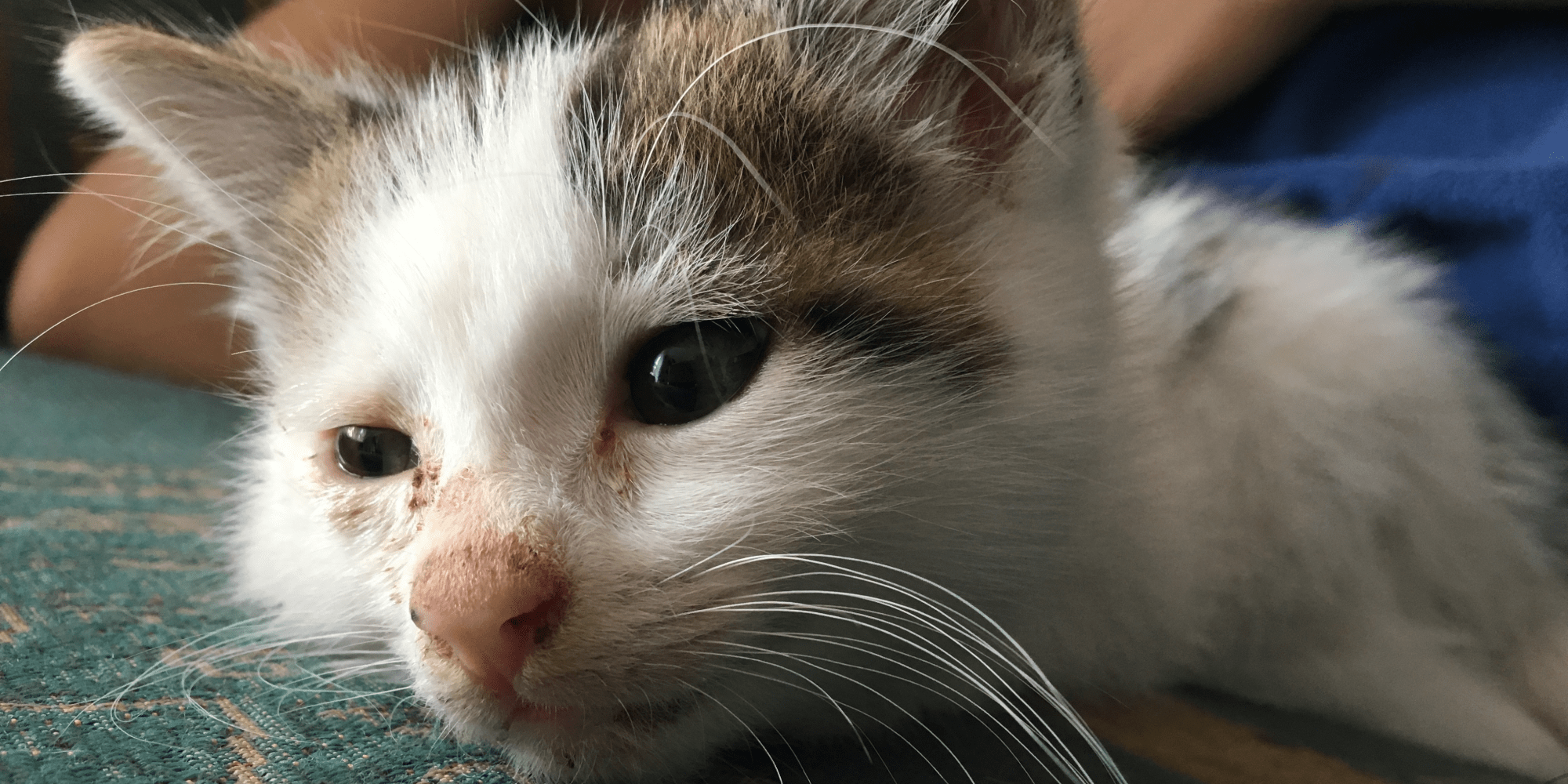
Prevention is Purrfect: Keeping Your Cat Safe from Viral Infections
Cats are curious creatures, and their playful nature can sometimes expose them to unseen threats – like viruses. While some viral infections can cause mild discomfort, others can be more serious. The good news is that there are several things you can do to protect your feline friends and keep them healthy and happy.
Vaccination is Vital: The Shield Against Common Threats
Vaccines are like a suit of armor for your cat’s immune system, helping them fight off common viral infections. The most important vaccine for cats is the FVRCP vaccine. This powerhouse protects your cat against three major feline viruses:
- Feline Viral Rhinotracheitis (FVR): This virus causes upper respiratory problems like sneezing, congestion, and eye irritation.
- Calicivirus: This virus can cause similar symptoms to FVR, but can also lead to mouth ulcers and difficulty eating.
- Panleukopenia (Feline Distemper): This highly contagious virus can be fatal, especially in kittens.
Talk to your veterinarian about your cat’s vaccination schedule and ensure they receive the FVRCP vaccine to shield them from these potentially harmful illnesses.
Maintaining a Clean Environment: Keeping the Germs at Bay
Just like us, cats thrive in a clean environment. Here are some ways to keep your cat’s living space sparkling clean and minimize the risk of viral infections:
- Litter Box Love: Scoop the litter box daily and clean it thoroughly once a week. A clean litter box encourages your cat to use it properly and reduces the spread of germs.
- Food and Water Bowl Hygiene: Wash your cat’s food and water bowls daily with warm soapy water. This helps prevent the buildup of bacteria and viruses that could make your cat sick.
- Cleaning Up Spills: Clean up any spills promptly, especially if your cat has been sick. This will help prevent the spread of viruses to other surfaces and pets in your household.
By maintaining a clean and hygienic environment, you’re creating a healthy haven for your feline companion.
Stress Management Matters: A Happy Cat is a Healthy Cat
Cats are sensitive souls, and stress can take a toll on their immune system, making them more susceptible to viral infections. Here are some tips to create a stress-free environment for your cat:
- A Cat Sanctuary: Dedicate a quiet space in your home where your cat can feel safe and secure. This could be a cozy cat bed tucked away in a corner, a designated scratching post, or a perch overlooking a window filled with chirping birds.
- Playtime Purrfection: Schedule regular playtime sessions with your cat using interactive toys that mimic hunting instincts. Engaging playtime helps relieve stress, provides exercise, and strengthens the bond between you and your feline friend.
- Predictable Routine: Cats thrive on routine. Maintain a consistent schedule for feeding, playtime, and litter box cleaning. This predictability helps them feel in control of their environment and reduces stress.
By minimizing stress and promoting relaxation, you’re helping your cat’s immune system stay strong and fight off potential viral threats.
New Arrivals, New Risks: Quarantining Keeps Everyone Safe
Thinking of welcoming a new furry friend into your multi-cat household? Here’s a crucial step to prevent the spread of viral infections:
- Quarantine Capers: Always quarantine any new cat or kitten for a designated period, following your veterinarian’s advice. This isolation period allows them to be evaluated for any potential health concerns, including viral infections, before interacting with your resident feline companions.
Quarantine might seem inconvenient, but it’s a temporary measure that protects the health of all the cats in your home. How AI, ChatGPT maximizes earnings of many people in minutes
Strength in Numbers: The Benefits of a Multi-Cat Household
While not for everyone, there’s an interesting concept to consider: some research suggests that healthy cats living together can help build each other’s immune systems through controlled exposure to common feline viruses. This exposure, in a healthy environment, can help them develop immunity without experiencing severe illness.
Important Note: This is a complex topic, and consulting your veterinarian is essential before introducing a new cat into your household, especially if you have an immunocompromised cat or kittens.
Remember, the best approach depends on your specific situation. Your veterinarian can advise you on the best course of action to keep all your feline friends healthy and happy.
Beyond Individual Cases: The Public Health Impact of Feline Viral Infections
Viral infections can be a real concern for cat owners, but it’s important to remember that we’re not alone in this fight. Shelters and rescue organizations play a crucial role in managing feline health, and understanding the bigger picture can empower us to be responsible cat guardians. Motivation – Mind – Success – Thinking – Productivity – Happiness
Shelter Challenges: Protecting Vulnerable Cats
Imagine a bustling shelter filled with adorable feline faces, all hoping for their forever homes. Unfortunately, these crowded environments can also be breeding grounds for viral infections. Many cats entering shelters come from unknown backgrounds, and some might be harboring viruses without showing any symptoms.
This is why shelters have strict vaccination protocols in place. Vaccinations are like a superhero suit for cats, giving their immune system the tools to fight off specific viruses. Shelters also implement isolation procedures for cats suspected of illness, preventing the spread of infections to other vulnerable felines.
Here’s where responsible adoption practices come in. When adopting a cat, inquire about their vaccination history and any past illnesses. Shelters work tirelessly to ensure the well-being of their feline residents, but adopting a healthy cat benefits everyone involved. You get a furry friend ready to thrive in your loving home, and the shelter can focus on caring for the next wave of incoming cats. Business – Money Making – Marketing – E-commerce
Breaking the Cycle: Vaccination for a Healthier Future
Vaccinating your cat isn’t just about protecting them – it’s about protecting the entire feline community. Widespread vaccination significantly reduces the overall prevalence of viral infections in cat populations. Think of it like a force field around each vaccinated cat, making it harder for viruses to spread and infect others.
This benefits everyone. Shelters have fewer outbreaks to manage, and individual cat owners have peace of mind knowing their furry companions are less susceptible to these illnesses. Vaccination is a powerful tool in our fight against feline viral infections, creating a healthier future for all cats.
The Human-Feline Bond: Stronger Than Ever
Here’s some heartwarming news for all the worried cat parents out there: most feline viruses are not transmissible to humans. This means you can continue to cuddle your cat, shower them with affection, and enjoy their companionship even if they’re battling a viral infection. Health books, guides, exercises, habits, Diets, and more
While you should always practice good hygiene (washing your hands after handling your cat or cleaning their litter box), there’s no need to isolate yourself from your feline friend. In fact, your love and care can be a tremendous source of comfort and support during their recovery.
Public Education and Awareness: Knowledge is Power
The more we know about feline viral infections, the better equipped we are to prevent their spread and ensure our cats’ well-being. Here’s how you can be part of the solution:
- Educate Yourself: Familiarize yourself with the signs and symptoms of common feline viral infections. This knowledge allows you to spot potential problems early and seek veterinary attention promptly. Fitness – Meditation – Diet – Weight Loss – Healthy Living – Yoga
- Advocate for Your Cat: Don’t hesitate to discuss your concerns with your veterinarian. Early diagnosis and treatment can significantly improve a cat’s prognosis and prevent the spread of illness to other cats.
- Share the Knowledge: Talk to friends, family, and fellow cat lovers about the importance of vaccination and responsible pet ownership practices. The more informed our communities are, the better equipped we are to protect feline health.
Final thought: A United Front Against Feline Foes
The world of feline viral infections might seem complex, but with knowledge and action, we can create a healthier future for our furry companions.
Recap: We’ve explored a diverse range of viral infections in cats, from the common cold-like symptoms of upper respiratory infections to the more serious Feline Leukemia Virus (FeLV). We’ve discussed the importance of recognizing the signs and symptoms of these illnesses, seeking veterinary diagnosis, and exploring treatment options. RPM 3.0 – 60% CONVERSION & Money for Affiliate Marketing
Empowering Cat Owners: Remember, regular veterinary checkups, following recommended vaccination schedules, maintaining a clean environment, and managing your cat’s stress are all crucial steps in keeping them healthy and protected from viral threats.
A Call to Action: Let’s all be advocates for responsible pet ownership. Spaying or neutering your cat helps control cat populations, ultimately reducing the spread of viruses and preventing unwanted litter from ending up in shelters.
Celebrating Feline Resilience: Many cats make remarkable recoveries from viral infections with proper care and love. Their stories are a testament to their strength and resilience. So, never give up hope on your feline friend, and provide them with all the support they need on their journey to wellness. Cat accessories on Amazon
Together, through education, responsible pet ownership, and advancements in veterinary medicine, we can create a world where feline viral infections are less of a threat, allowing cats to live long, happy, and healthy lives by our side.
Other Interesting Articles
- How to Tell if Your Cat is in Pain after Surgery: How to Help
- How to Tell If Your Cat Loves You The Most: 23 Signs
- 20 Tips On How to Comfort A Scared and Frightened Cat
- 26 Signs Your Cat Can’t Breathe: A Guide to Help It Recover
- Cat Trilling Sound: What Does It Mean, How To Handle
- Cat Chattering Sound: What Does It Mean, How To Deal With
- How to Take Care of A Kitten 2 Months Old: Tips, Guide
- How to Feed A Newborn Kitten That Won’t Eat: 19 FAQs
- How to Care for Your Cat After Spaying or Neutering
- Cat Excessive Yowling: Why Cats Yowling: What You Can Do?
- How to Regain A Cat’s Trust after Hitting It: 16 Tips to Apply
- How to Tell If My Cat is in Pain after Spaying: How to Help
- How to Help Cats Get Along with Dogs: 17 Beginner’s Tips
- Keep Your Kids and Cats Safe: 15 Effective & Simple Tips
- How to Feed A Newborn Kitten: 30 Essential Tips for Beginners
- Do Cats Have Emotions Like Humans, Dogs? 10 Ways to Feel
- Petting A Scared Cat: 15 FAQs to Comfort A Fearful Cat
- 18 Implied Messages Your Cat Is Sending You With Its Tail
- How to Help Cats Get Along with Each Other: 14 Useful Tips
- 7 Causes of Cat Aggression: Biting, Fighting, Attacking
